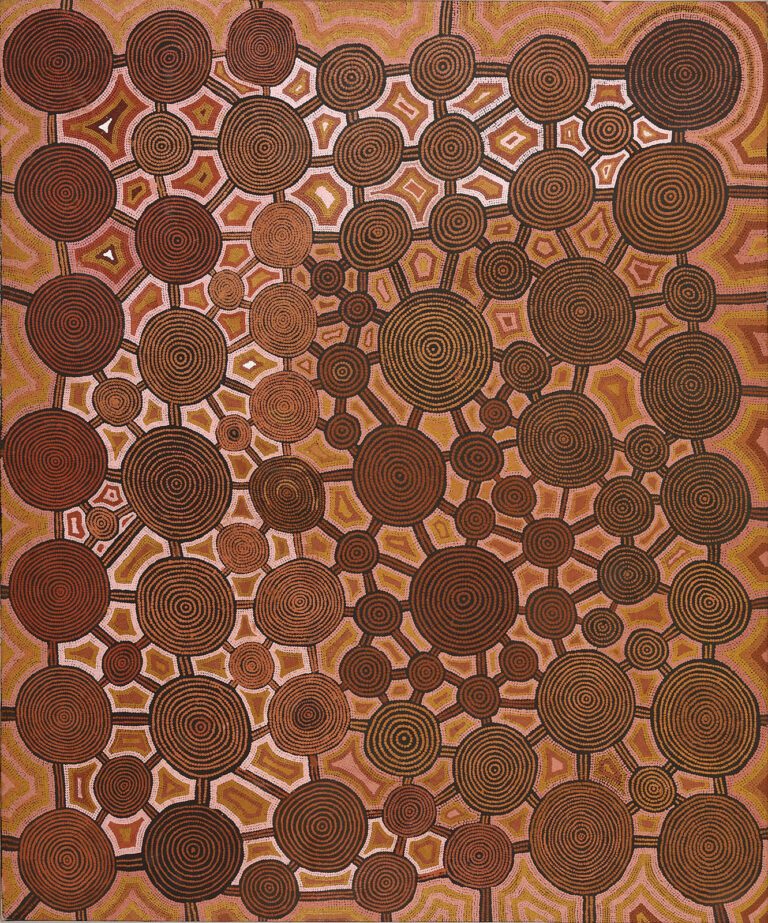

partnership
with












As the ancestral Tingarri men crossed the desert, they were followed by a group of women and children. The women camped nearby because they were not permitted to see the Tingarri ceremonies. Their actions at these sites created women’s Tjukurrpa and ceremonies practiced today. Some of these sites are restricted to women only, but others can be visited and painted by both men and women, as the three paintings on this wall attest.
This painting depicts a later scene in the women's journey as they travel north toward Wilkinkarra, one of the largest salt lakes in the world.
Language Group: Pintupi
Dates: c. 1935-2000
Timmy Payungu Tjapangati was a Pintupi artist relocated to Papunya from the far reaches of the Western Desert. He was one of the first Pintupi men to start painting. He was also one of the only Pintupi people who could speak Warlpiri and used this skill to promote the exchange of ritual knowledge. His painting Kangaroo and Shield People Dreaming at Lake Mackay (1980), which toured the United States in the exhibition Dreamings: The Art of Aboriginal Australia (1988) was illegally appropriated for a carpet design and became a part of a landmark case involving the intellectual property of Aboriginal artists. In 1994, Timmy Payungu had a solo exhibition at the Aboriginal and South Pacific Gallery in Sydney.
Biographical information sourced from Vivien Johnson, Lives of the Papunya Tula Artists. Alice Springs: IAD Press, 2008.

TIMMY PAYUNGU TJAPANGATI, Tingarri Woman at Wilkinkarra, 1987
Synthetic polymer paint on canvas. 71 1/2 × 60 in. (181.6 × 152.4 cm). Kluge-Ruhe Aboriginal Art Collection of the University of Virginia, Gift of John W. Kluge, 1997. 1989.7011.003.
© estate of the artist licensed by Aboriginal Artists Agency Ltd for Papunya Tula Artists Pty Ltd.

Timmy Payungu Tjapangati at West Camp, Papunya, 1981.
Photo by J.V.S. Megaw.

Timmy Payungu Tjapangati at Yayayi, 1974.
Photo by Fred Myers.